I have always been intrigued by the unique taste of sourdough bread. Unlike other bread types, sourdough has a tangy and slightly sour flavor that comes from the natural fermentation process used to make it.
The fermentation process also gives it a chewy texture and a dense, moist crumb that sets it apart from other bread types.
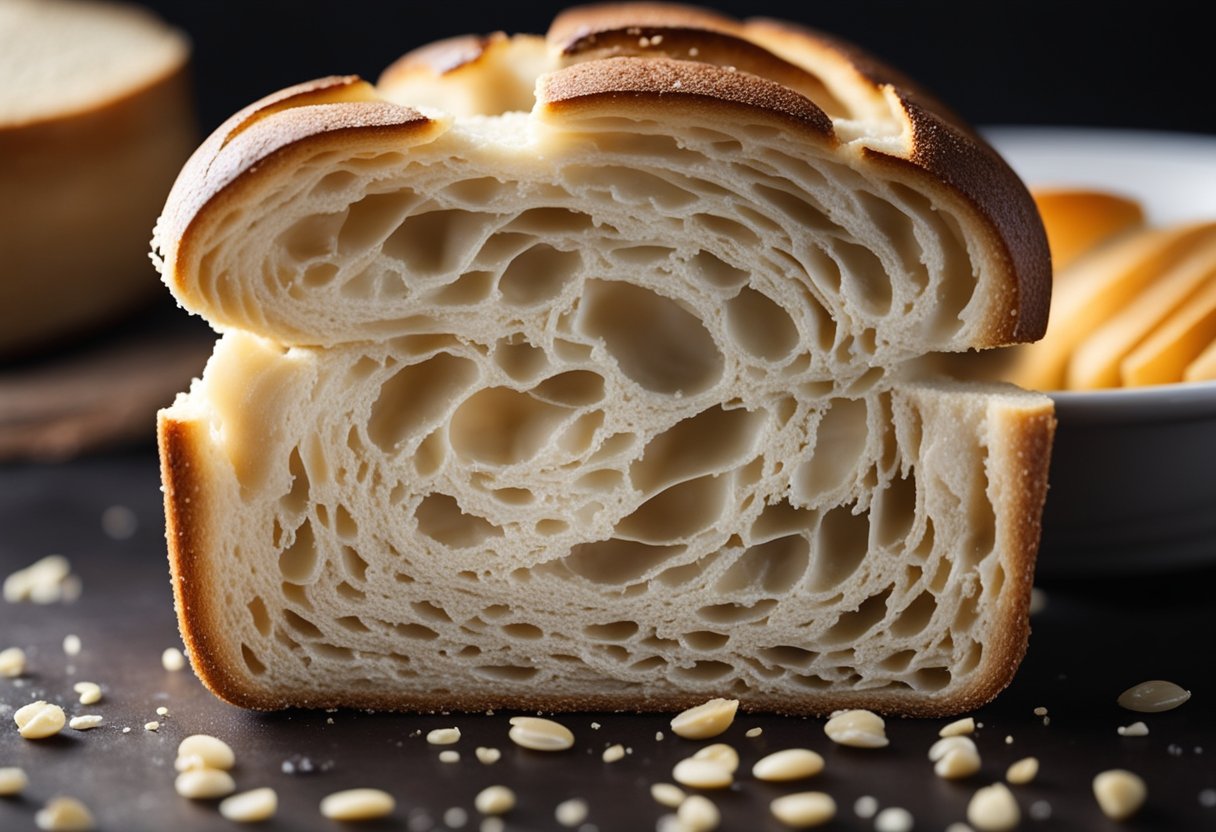
Sourdough bread has been gaining popularity in recent years due to its unique taste and health benefits.
It is made using a starter culture of water and flour, which ferments over time and eventually produces natural yeast.
This starter has a slightly acidic taste which gives sourdough that stand-out flavor. The lack of yeast also means that sourdough is extremely airy and light but has a very hard, crusty outer layer.
Key Takeaways
- Sourdough bread has a tangy and slightly sour flavor that comes from the natural fermentation process used to make it.
- The fermentation process also gives it a chewy texture and a dense, moist crumb that sets it apart from other bread types.
- Sourdough bread is gaining popularity due to its unique taste and health benefits.
The Fundamentals of Sourdough Bread
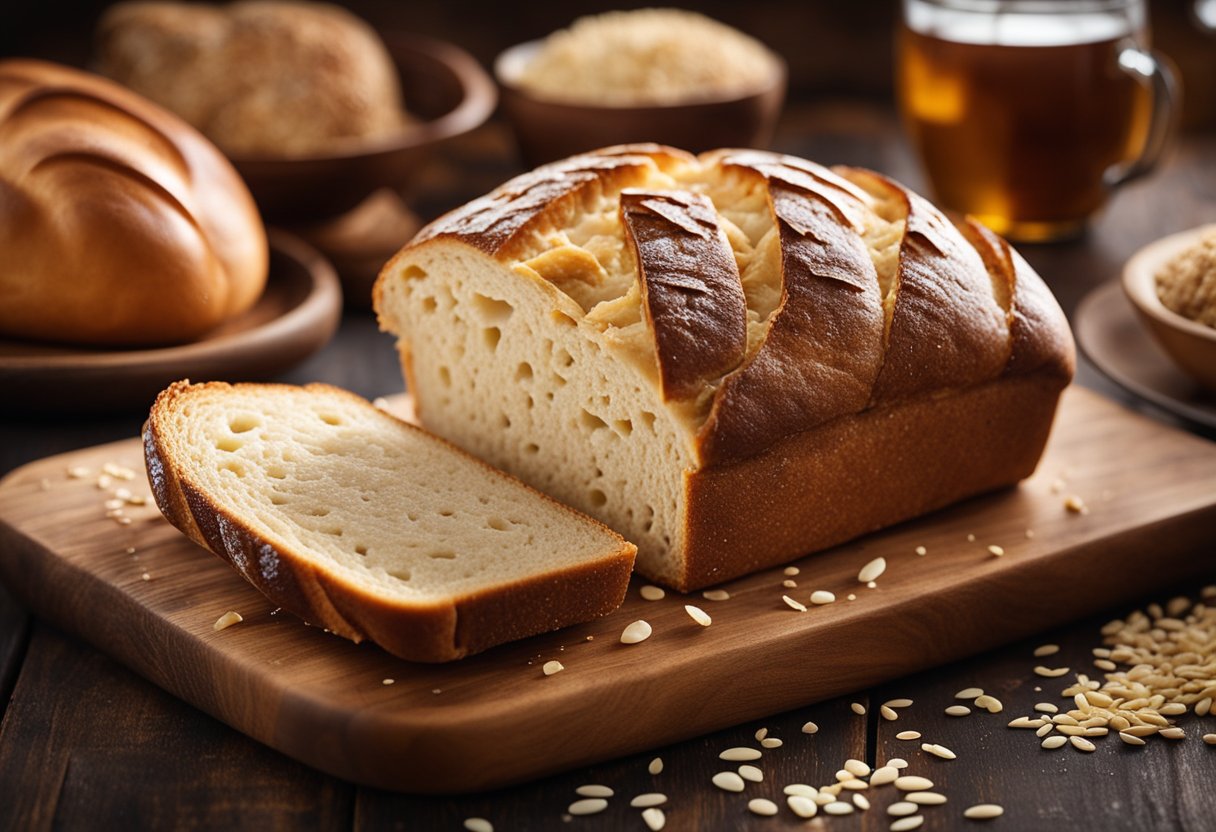
Sourdough bread is a type of bread that is made through a natural fermentation process. The dough is made by mixing flour and water, and then adding a sourdough starter.
The starter is a mixture of flour and water that has been left to ferment for a period of time, usually several days.
During this time, wild yeast and bacteria in the air and on the flour will begin to grow and multiply in the mixture, creating a leaven that can be used to make bread.
One of the key differences between sourdough bread and other types of bread is the use of a starter instead of commercial yeast.
The starter provides a natural leavening agent that gives the bread its characteristic flavor and texture.
The fermentation process also breaks down the gluten in the flour, making the bread easier to digest for some people.
Sourdough bread has a distinct tangy flavor that comes from the lactic acid produced during the fermentation process.
The flavor can vary depending on the type of flour used, the hydration of the dough, and the length of the fermentation process.
Some sourdough breads have a more pronounced sour flavor, while others are more mild.
The texture of sourdough bread is also unique. The dough is usually wetter and more elastic than other types of bread dough, which can make it more difficult to work with.
However, this also gives the bread a chewy, moist texture that is prized by many bread lovers. The crust of sourdough bread is usually thick and crispy, with a deep golden brown color.
Overall, sourdough bread is a delicious and unique type of bread that is enjoyed by many people around the world.
Its distinctive flavor and texture are the result of a natural fermentation process that has been used for thousands of years.
Whether you are a seasoned bread baker or a curious beginner, sourdough bread is definitely worth trying.
The Unique Taste of Sourdough Bread
As a bread lover, I have always been curious about the taste of sourdough bread. So, I did some research and tasted some sourdough bread myself.
Here’s what I found out about the unique taste of sourdough bread.
Sourdough bread has a distinct flavor profile that sets it apart from other breads. The fermentation process gives it a tangy taste that is slightly acidic.
This tangy flavor comes from the natural yeast starter and the long fermentation process used to make sourdough bread.
The flavor of sourdough bread can vary depending on the type of flour used and the fermentation time.
Sourdough bread made with whole wheat flour can have a nutty and slightly sweet flavor, while sourdough bread made with rye flour can have a stronger and more earthy flavor.
The crust of sourdough bread is also unique. It has a hard and crusty outer layer that gives a satisfying crunch when you bite into it.
The lack of yeast in the bread also makes it extremely airy and light, which adds to its unique texture.
Overall, the taste of sourdough bread is distinct and memorable. Its tangy flavor and crusty texture make it a favorite among bread lovers.
If you haven’t tried sourdough bread yet, I highly recommend giving it a try to experience its unique flavor profile.
The Role of Ingredients in Taste
As someone who has baked many loaves of sourdough bread, I can confidently say that the taste of sourdough bread is heavily influenced by the ingredients used.
Here are some of the key ingredients and how they affect the taste of sourdough bread:
Flour
The type of flour used can have a big impact on the taste of sourdough bread. Whole wheat flour will give the bread a nuttier, earthier flavor, while bread flour will produce a lighter, airier loaf.
Some bakers even use a combination of flours to achieve a specific taste and texture.
Yeast
The yeast used to make sourdough bread can come in a few different forms. Commercial yeast will produce a more predictable, consistent flavor, while wild yeast (also known as natural yeast) will give the bread a more complex, nuanced taste.
The type of yeast used will also affect the rise and texture of the bread.
Salt
Salt is a crucial ingredient in sourdough bread, as it helps to regulate the fermentation process and enhance the flavor.
The amount of salt used can also affect the taste of the bread. Too little salt can result in a bland, uninteresting loaf, while too much salt can overpower the other flavors.
Butter and Eggs
While not essential ingredients in sourdough bread, adding butter or eggs can give the bread a richer, more indulgent flavor.
However, it’s important to note that these ingredients can also affect the texture of the bread, making it denser and heavier.
Overall, the taste of sourdough bread is a result of the complex interplay between the ingredients used and the fermentation process.
By experimenting with different flours, yeasts, and other ingredients, bakers can create a wide range of unique and delicious loaves.
The Fermentation Process and Its Impact on Taste
As a sourdough bread enthusiast, I can tell you that the unique taste of sourdough bread comes from its natural fermentation process.
Unlike other breads that use commercial yeast, sourdough bread relies on wild yeast and bacteria that are present in the flour and the environment.
During the fermentation process, the wild yeast and bacteria break down the carbohydrates in the flour and produce lactic acid, which gives the bread its tangy flavor.
The longer the fermentation process, the more complex the flavor becomes. This is why sourdough bread can have a wide range of flavors, from mildly sour to intensely tangy.
The length of the fermentation process is also important in determining the texture of the bread. The longer the fermentation, the more time the dough has to develop gluten, which gives the bread its chewy texture.
This is why sourdough bread is often denser and chewier than other breads.
In addition to the flavor and texture, the fermentation process also affects the nutritional profile of the bread.
The lactic acid produced during fermentation helps to break down the phytic acid in the flour, which makes the nutrients more bioavailable and easier to digest.
Overall, the natural fermentation process is what gives sourdough bread its unique taste and texture.
The length of fermentation, the production of lactic acid, and the breakdown of phytic acid all play a role in creating the delicious and nutritious bread that we know and love.
Texture and Appearance of Sourdough Bread
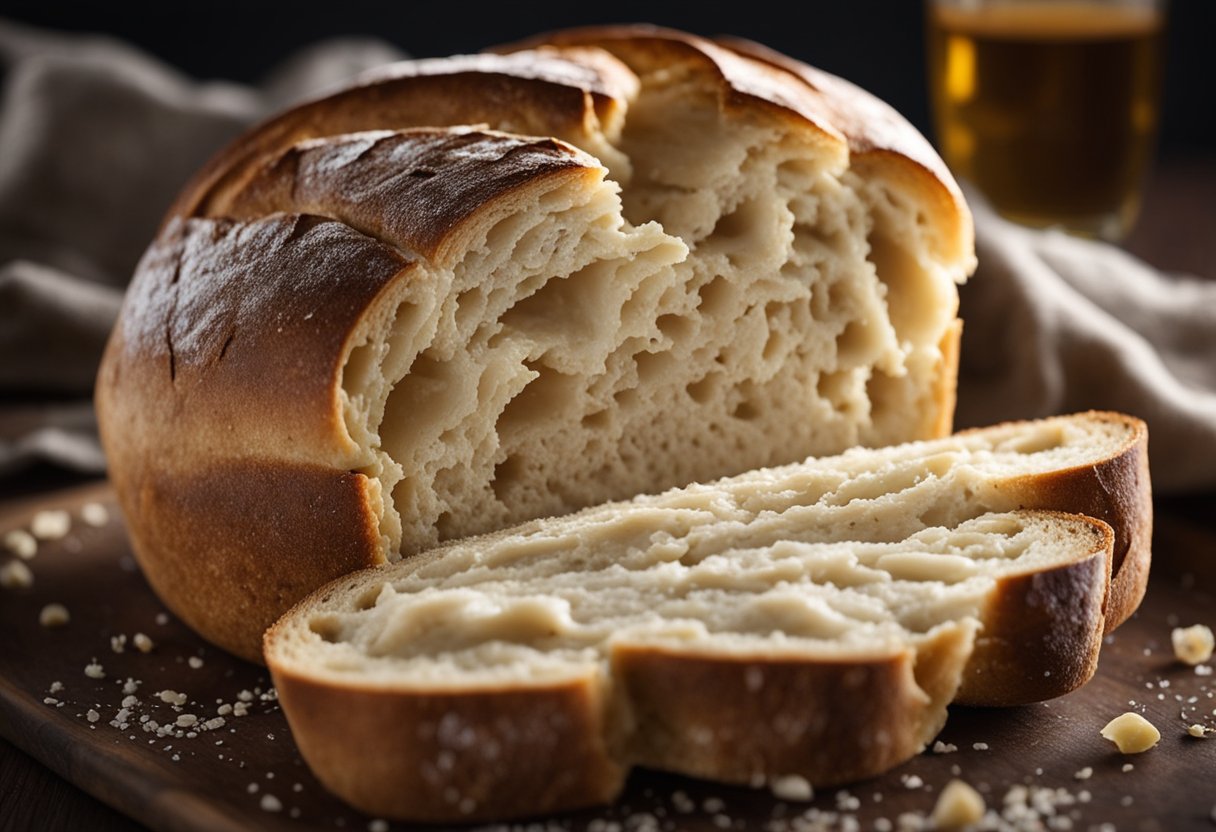
As a bread lover, I find the texture and appearance of sourdough bread to be quite unique. Sourdough bread has a chewy texture that sets it apart from other bread types.
It is not too soft or too hard, but has the perfect amount of chewiness that makes it satisfying to bite into.
The crust of sourdough bread is also quite distinctive. It has a crusty outside that is slightly crispy, but not too hard. It gives way to a moist crumb that is soft and chewy.
Freshly baked sourdough bread is a treat for the senses. The aroma of sourdough bread baking in the oven is heavenly.
The smell of the bread fills the room and makes your mouth water. The crust of sourdough bread is also quite appealing. It has a chewy crust that is slightly tangy and adds to the overall flavor of the bread.
Sourdough bread has a crusty outer layer that is quite thick. This outer layer is what gives the bread its unique texture and flavor.
The thickness of the crust can vary depending on how long the bread is baked. A longer bake time will result in a thicker crust.
In conclusion, the texture and appearance of sourdough bread is quite unique. It has a chewy texture, crusty outside, and moist crumb that makes it satisfying to eat.
The aroma of freshly baked sourdough bread is heavenly, and the crust is quite appealing. If you have never tried sourdough bread before, I highly recommend giving it a try.
Health Benefits and Nutritional Value of Sourdough Bread
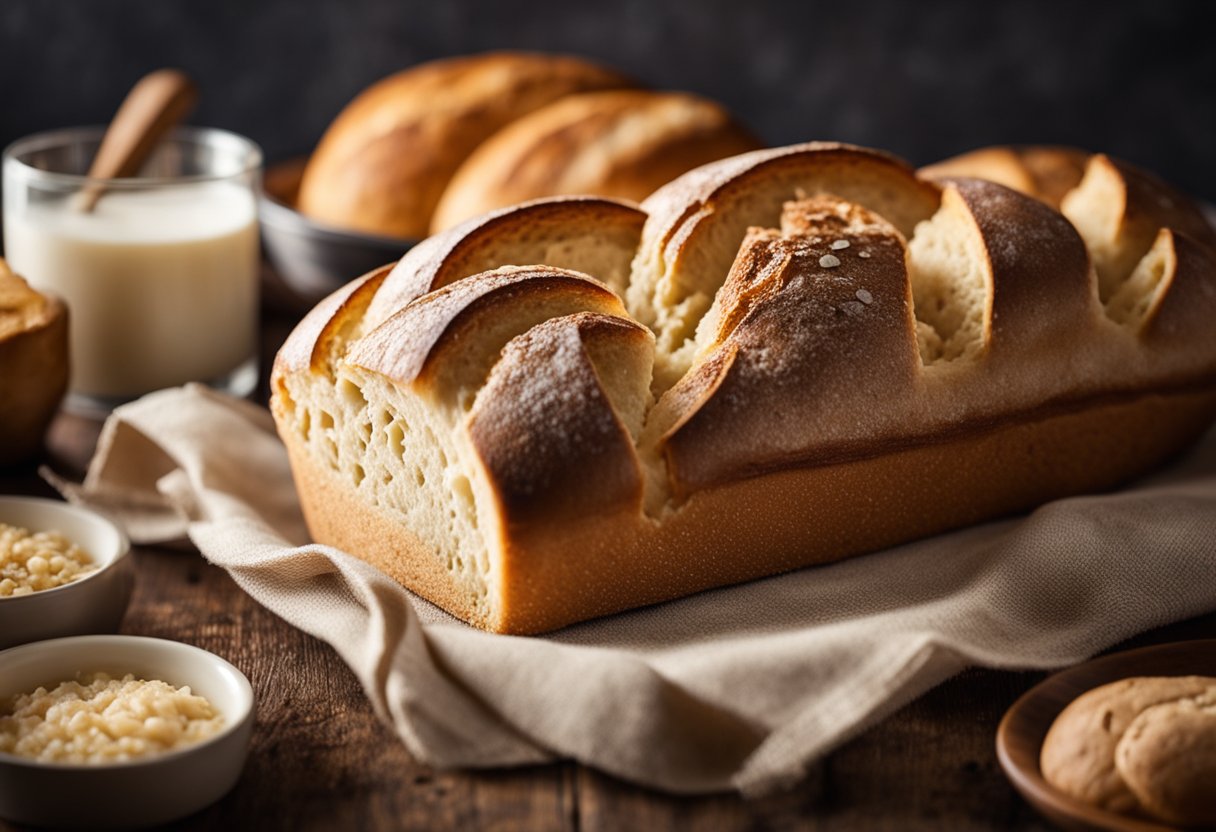
As a nutritionist, I can confidently say that sourdough bread is a nutritious and healthy option for bread lovers.
Sourdough bread is made using a traditional fermentation process that involves a sourdough starter. This starter provides the bread with beneficial nutrients and good bacteria that are essential for our health.
Sourdough bread is rich in nutrients like protein, vitamins, minerals, and fiber. It is also lower in calories compared to other types of bread.
A slice of sourdough bread made with enriched flour provides 15% of your daily need for folic acid and 7% of your iron needs, which are essential nutrients, particularly important before and during pregnancy.
Studies have shown that sourdough bread has a lower glycemic index than other bread, which means it is less likely to spike your blood sugar levels.
This is because the fermentation process breaks down the starches in the bread, making it easier to digest.
Sourdough bread also contains antioxidants like the peptides found in the bread, which can lower the risk for certain types of cancer, signs of aging, or chronic diseases like rheumatoid arthritis.
Furthermore, sourdough bread is often made with whole grains, which means it is a good source of fiber, magnesium, and niacin.
These nutrients are essential for good health and can help reduce the risk of heart disease, stroke, and other chronic conditions.
In summary, sourdough bread is a nutritious and healthy option for bread lovers. It is rich in essential nutrients, good bacteria, and antioxidants, and has a lower glycemic index than other bread.
So, if you are looking for a healthy and tasty bread option, sourdough bread is definitely worth a try!
Baking Techniques for Sourdough Bread
As a sourdough bread baker, I have learned that there are a few essential techniques that can help you create a perfect loaf of bread. Here are some of the most important things to keep in mind when baking sourdough bread:
Recipe
A good sourdough bread recipe should include a few key ingredients: flour, water, salt, and a leavening agent.
The leavening agent in sourdough bread is the sourdough starter, which is a mixture of flour and water that has been fermented with wild yeast and bacteria.
The recipe should also include instructions for feeding and maintaining the sourdough starter.
Bread-Making
When making sourdough bread, it is important to pay attention to the temperature of the dough.
The ideal temperature for the dough is around 75°F to 80°F (24°C to 27°C). This temperature range allows the dough to ferment properly and rise.
Baking Temperature
The baking temperature for sourdough bread can vary depending on the recipe and the desired outcome.
Generally, sourdough bread is baked at a high temperature, around 450°F (232°C), for the first 10 to 15 minutes, then the temperature is reduced to around 400°F (204°C) for the remainder of the baking time.
Bread Baking
When baking sourdough bread, it is important to create a steamy environment in the oven. This can be achieved by placing a pan of water in the oven or by spraying the dough with water before baking. The steam helps to create a nice crust on the bread.
Leavening Agent
The leavening agent in sourdough bread is the sourdough starter, which is a mixture of flour and water that has been fermented with wild yeast and bacteria. The starter is what gives sourdough bread its unique flavor and texture.
Bread Dough
The dough for sourdough bread should be hydrated properly. The hydration level refers to the amount of water in the dough compared to the amount of flour. A hydration level of around 70% to 75% is ideal for sourdough bread.
Bread Ingredients
The ingredients for sourdough bread are simple: flour, water, salt, and a leavening agent. It is important to use high-quality ingredients, such as organic flour and sea salt, to ensure the best flavor and texture.
Active Dry Yeast
Sourdough bread does not require active dry yeast, as the sourdough starter serves as the leavening agent. However, some recipes may call for a small amount of active dry yeast to help the bread rise.
Hydration
The hydration level of the dough is important for creating a good texture and crumb in sourdough bread. The dough should be hydrated properly, around 70% to 75%, to ensure a nice rise and a good texture.
Feedings
Feeding the sourdough starter regularly is important for maintaining its health and vitality. The starter should be fed with equal parts flour and water, and should be fed at least once a week.
In conclusion, baking sourdough bread requires attention to detail and a few essential techniques.
By following a good recipe, paying attention to the temperature and hydration of the dough, and using high-quality ingredients, you can create a delicious loaf of sourdough bread.
The Versatility of Sourdough Bread
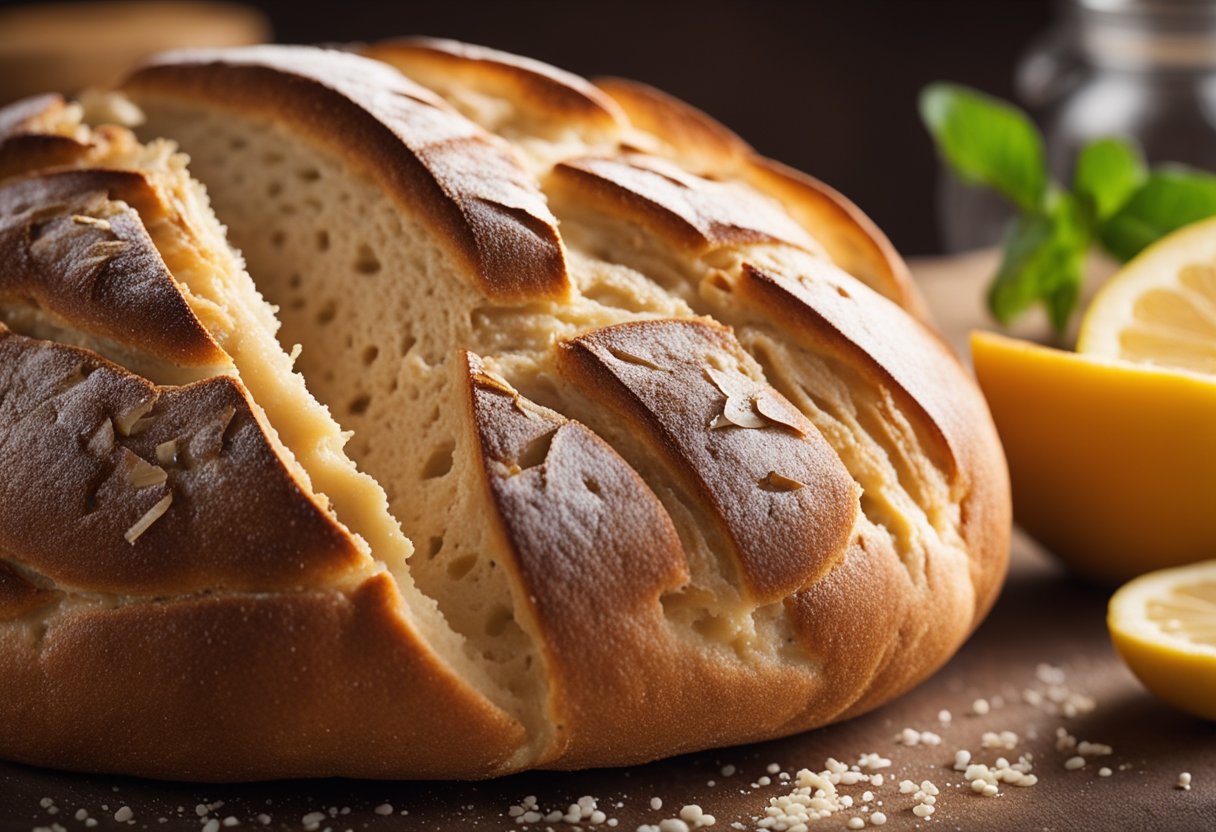
Sourdough bread is a versatile bread that can be used in a variety of dishes. Its unique flavor and texture make it a popular choice for many different types of meals.
One of the most common uses for sourdough bread is in sandwiches. The bread’s tangy flavor and chewy texture pair well with a variety of fillings, from deli meats to roasted vegetables.
The crusty exterior of sourdough bread also helps to keep the sandwich from getting soggy.
Sourdough bread is also a great choice for serving with soup or salad. Its dense texture makes it a filling addition to any meal, and its tangy flavor adds a depth of flavor to any dish.
You can also use sourdough bread to make croutons for your salad or to serve alongside your soup.
Another popular way to use sourdough bread is to make bruschetta. The bread’s chewy texture and tangy flavor make it the perfect base for a variety of toppings, from fresh tomatoes and basil to creamy ricotta cheese and honey.
Overall, sourdough bread is a versatile ingredient that can be used in a variety of dishes. Its unique flavor and texture make it a popular choice for many different types of meals.
The Popularity of Sourdough Bread
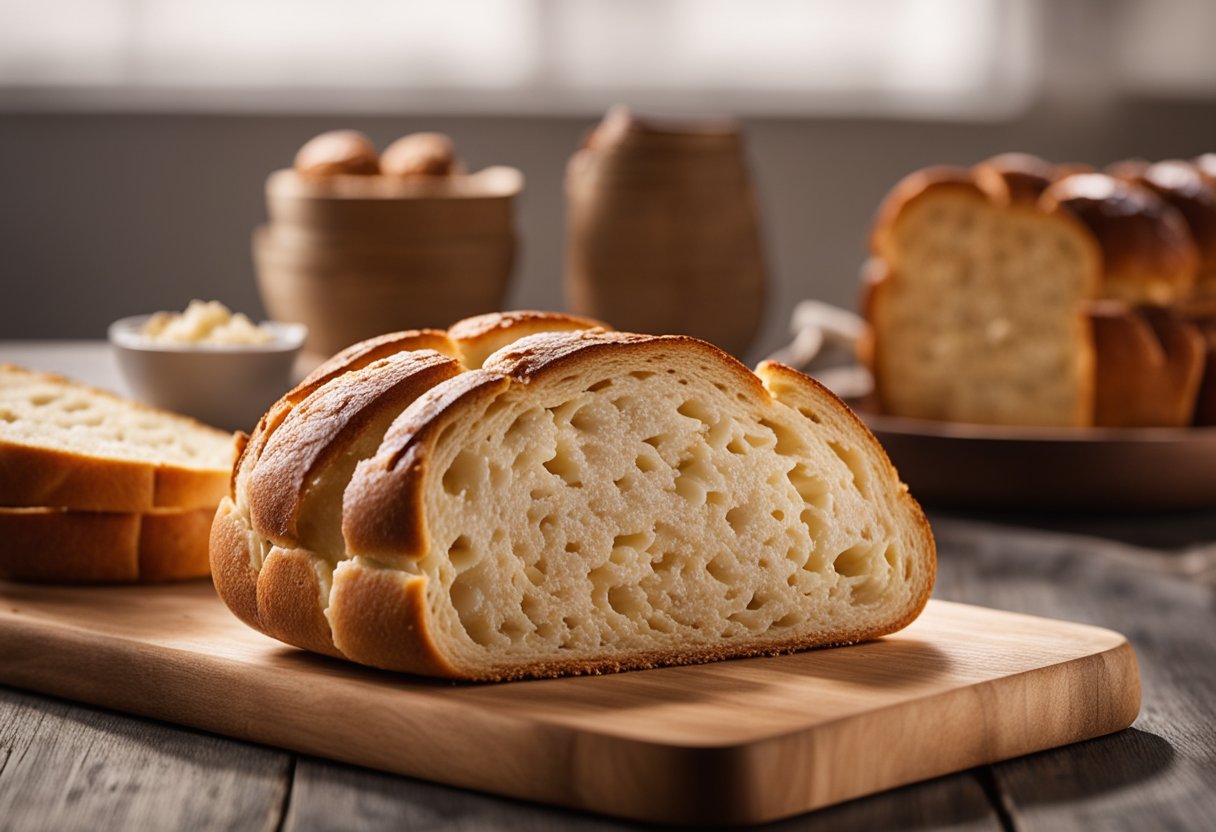
As a bread lover, I have always been intrigued by the unique taste of sourdough bread. It is not surprising that sourdough bread has gained immense popularity in recent years.
Sourdough bread is made using a natural yeast starter and a long fermentation process, which gives it a unique flavor profile that sets it apart from other breads.
One of the reasons why sourdough bread is so popular is because of the unique fermentation process that it undergoes.
Lactobacillus, a type of good bacteria, is present in the natural yeast starter used to make sourdough bread.
This bacteria helps to break down the gluten in the dough, making it easier to digest. Additionally, it gives sourdough bread its characteristic tangy taste.
Another reason for the popularity of sourdough bread is the fact that it is often made with whole grain flour.
This type of flour is less processed than white flour, which means that it retains more of its nutrients. Whole grain flour is also higher in fiber, which can help to keep you feeling fuller for longer.
Compared to other types of yeast bread, sourdough bread is also lower in sugar and has a lower glycemic index.
This means that it can be a good option for people who are watching their blood sugar levels or trying to reduce their sugar intake.
Lastly, sourdough bread is often compared to kimchi, a Korean fermented vegetable dish. Both are fermented foods that are rich in good bacteria and have a tangy flavor.
This similarity has helped to increase the popularity of sourdough bread, particularly among people who are interested in trying new and different foods.
Overall, the unique taste and health benefits of sourdough bread have contributed to its popularity in recent years.
Frequently Asked Questions
What are the basic ingredients in bread making?
The basic ingredients in bread making are flour, water, salt, and yeast. Flour provides the structure and texture of the bread, while water activates the yeast and helps the dough rise.
Salt is added for flavor and to regulate the fermentation process.
What makes sourdough bread different?
Sourdough bread is different from other breads because it is made using a natural yeast starter and a long fermentation process.
The natural yeast starter is made from flour and water, and it contains wild yeast and bacteria that help to break down the gluten in the flour. This results in a bread that is easier to digest and has a unique flavor profile.
How would you describe the taste of sourdough?
The taste of sourdough bread can vary depending on the recipe and the fermentation process. Generally, sourdough bread has a tangy, slightly sour flavor that is balanced by a nutty, earthy taste. The texture is chewy and moist, with a crispy crust.
Does sourdough bread have fiber?
Yes, sourdough bread contains fiber. The fermentation process in sourdough bread breaks down the complex carbohydrates in the flour, making it easier to digest and increasing the fiber content.
Is sourdough bread sour in taste?
Sourdough bread is slightly sour in taste, but it is not overpowering. The sourness comes from the lactic acid produced during the fermentation process, which gives the bread a tangy flavor.
What is so special about sourdough bread?
Sourdough bread is special because it is made using a natural fermentation process that results in a bread that is easier to digest and has a unique flavor profile.
The natural yeast and bacteria in the sourdough starter help to break down the gluten in the flour, making it easier to digest.
Additionally, the long fermentation process gives the bread a complex and nutty flavor that sets it apart from other breads.







